Signs of A Dangerous Tree
In this article we explore how to identify a dangerous tree. Although some will fall without warning, most trees will give signs that danger is imminent.
As a home-owner you need to be able to identify a dangerous tree. Although trees fall without warning, most will give signs that danger is imminent.
As beautiful and majestic as trees can be, they can also pose significant dangers. Dangerous trees, especially those that are old or diseased, can cause extensive damage and even injury to property and people.
During storms or high winds, the danger can be even greater as the soil around the tree can become saturated and unstable, making it easier for the tree to topple over.
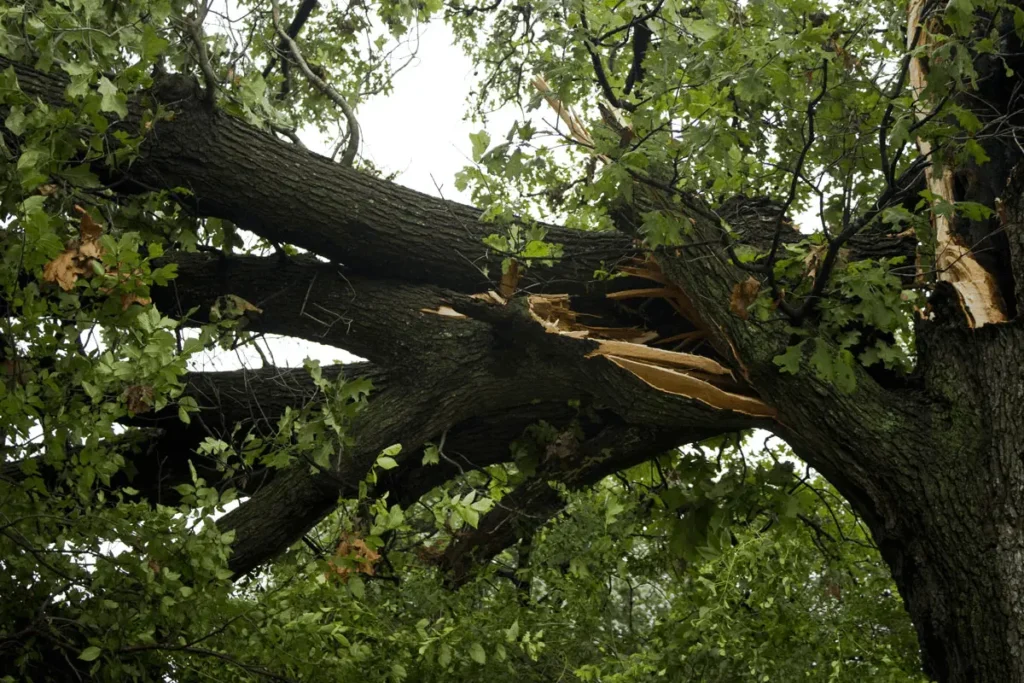
Stay Proactive To Minimize Risk
Keep an eye out for potential Danger
It’s essential to be aware of the potential risks associated with trees. Take proactive measures to minimize those risks. This includes regular inspections by certified arborists who can identify signs of disease or weakness in trees and recommend appropriate solutions like pruning, cabling, or bracing.
By doing so, you can reduce the chance of trees falling unexpectedly and causing damage or injury. Need a tree assessed for damage or have an emergency tree service need? Follow the link for more information… Emergency Tree Service
It’s also important to keep a watchful eye on any trees in your surroundings, particularly during storms or high winds. Additionally, never park under trees that could fall due to adverse weather conditions, and be sure to avoid being near trees that show signs of instability or rot.
Although trees are an essential part of the natural landscape, it’s crucial to stay vigilant and take proactive measures to minimize any tree dangers associated with falling trees. With regular inspections and careful attention, you can help ensure the safety of both property and people.
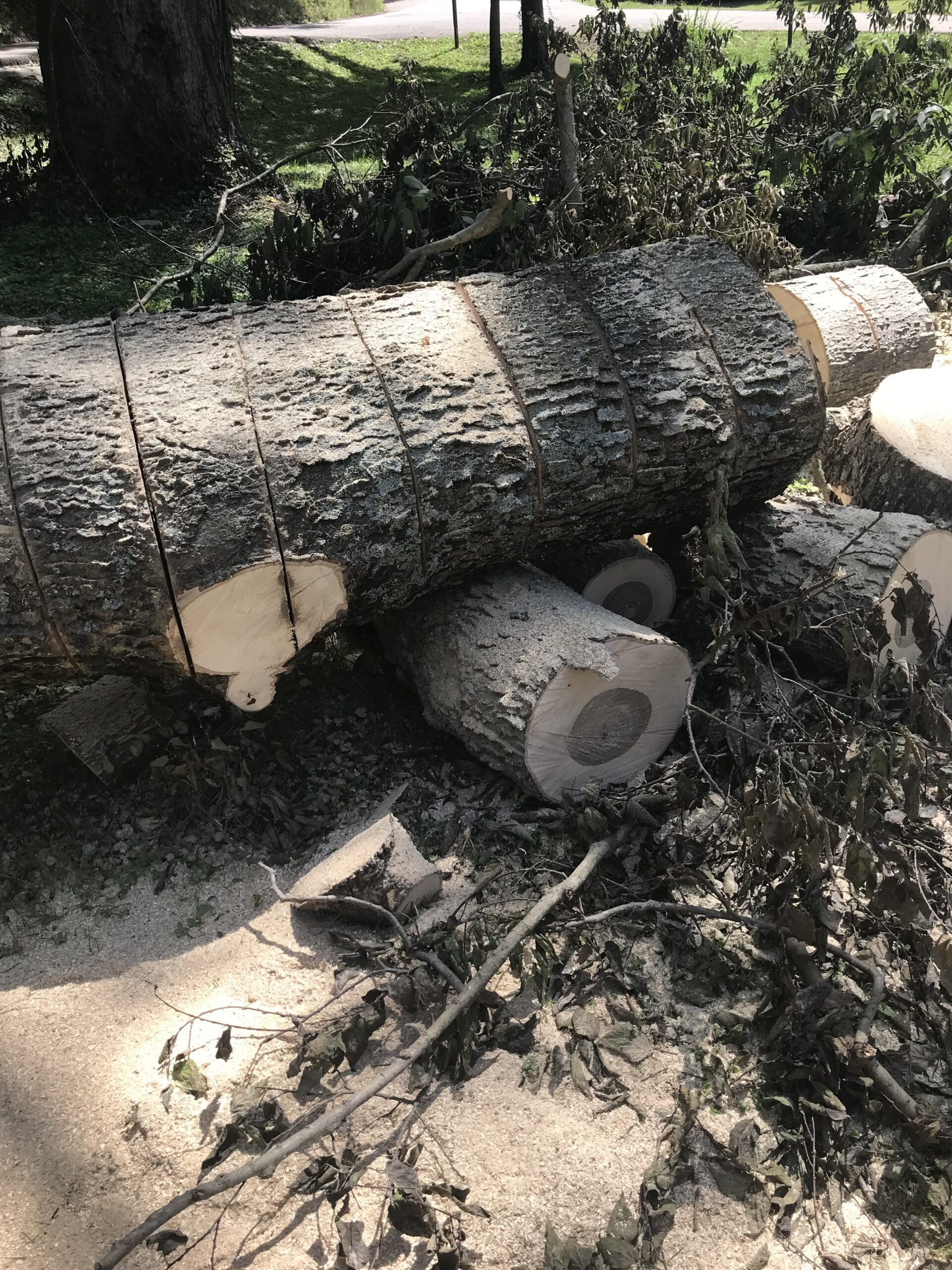
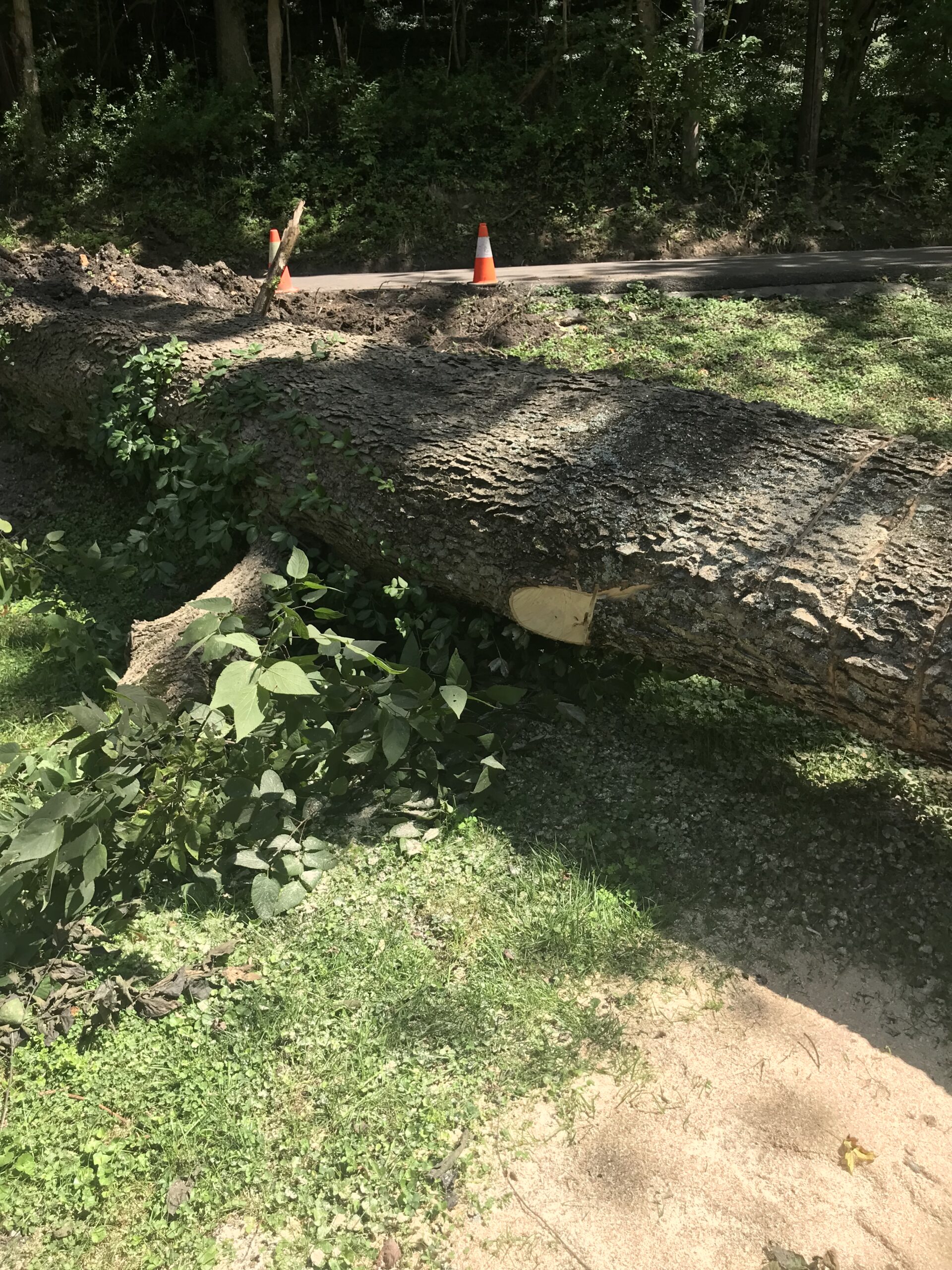
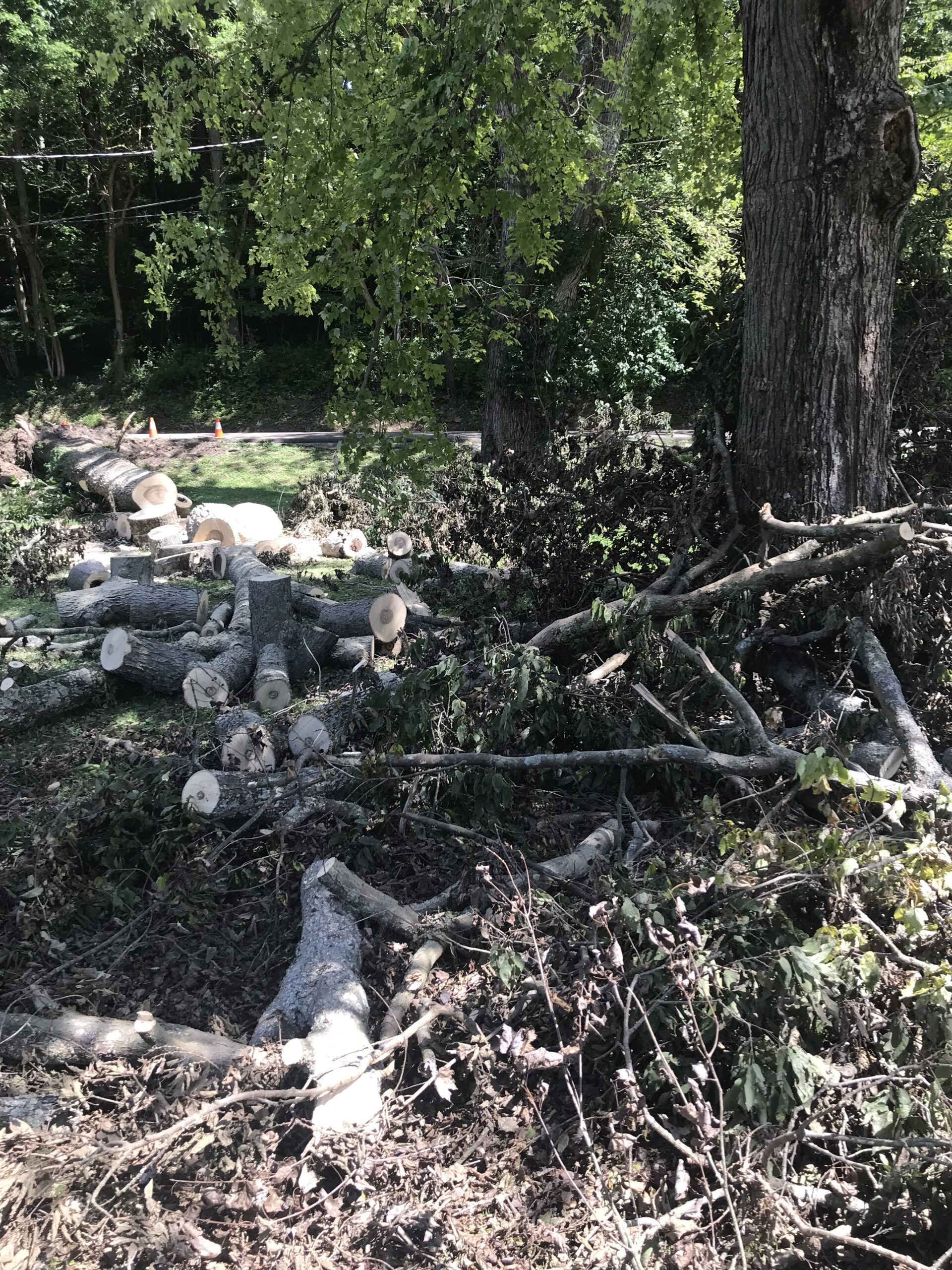
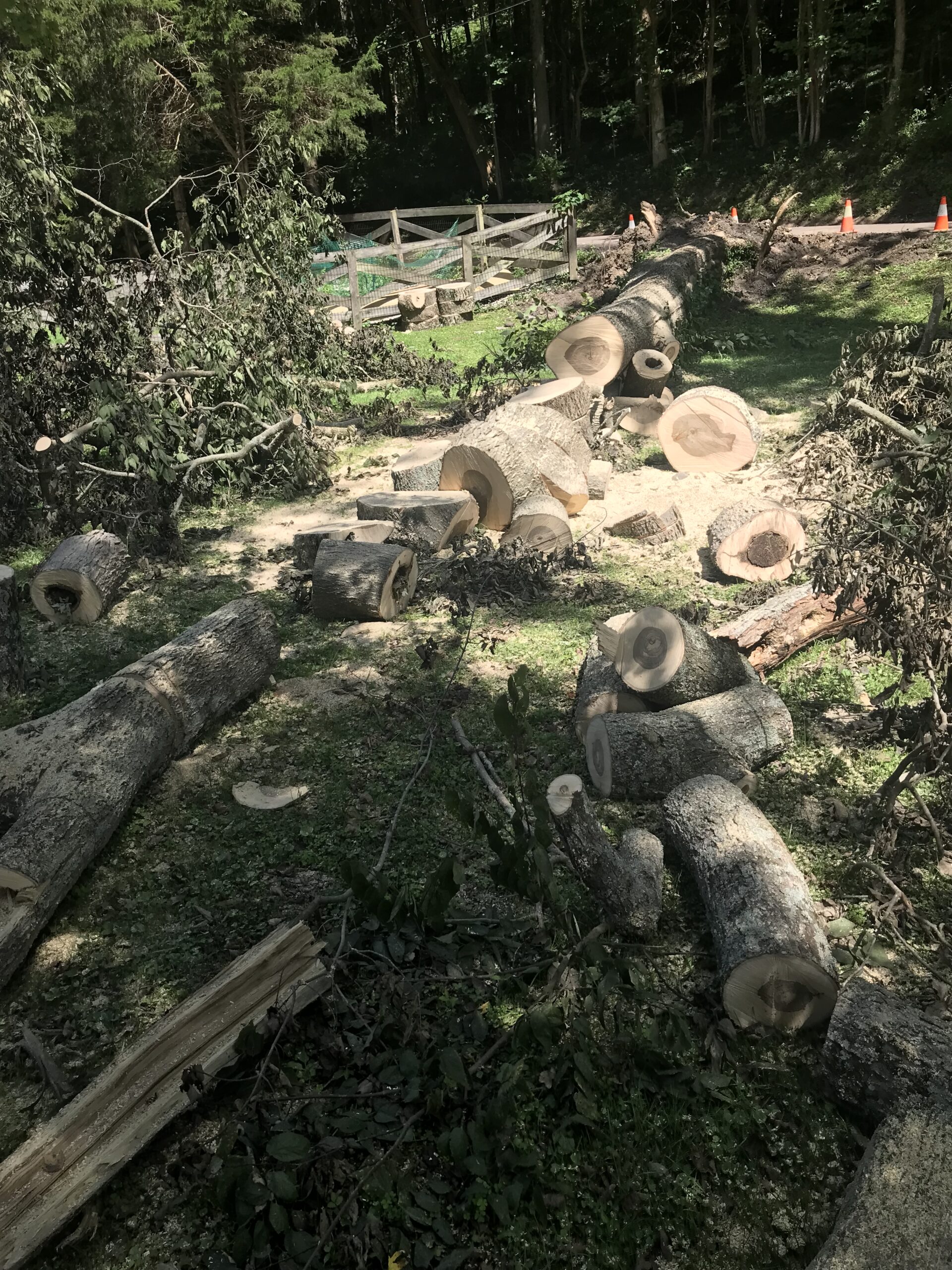




Spotting danger in a tree can Save A Life
This giant tree fell and stretched from the back side of the customers’ property to the very front. What a giant it was at around 15 feet around at the base.
If someone would have walked under it that day, they would not have made it. Thank God the kids didn’t have school that day and didn’t walk to the bus stop. Every other day the mother and two children walked directly in the path of this behemoth tree.
What made this tree so dangerous? Besides the sheer size and weight, the roots were getting too much water. The root system started to rot and couldn’t support the weight of the tree. Fortunately nobody was hurt. This one was a very large tree removal.
Six Signs To Identify A Potentially Dangerous Tree
- Leaning or Unstable Structure: A tree leaning significantly to one side or with an unstable base can easily fall during storms or heavy winds.
- Cracks and Cavities: Visible cracks or cavities in the trunk or major branches can indicate internal decay, weakening the tree’s structure.
- Dead or Dying Branches: Dead or dying branches can break and fall unexpectedly, potentially causing injury or damage.
- Fungal Growth: Fungi growing at the base of a tree or on its trunk can signify internal rot and decay.
- Exposed Roots: Trees with large sections of exposed roots may be unstable and at risk of falling over.
- Proximity to Structures: A tree too close to a building, power lines, or other structures can pose a danger if it falls.
Identifying and Addressing Dangerous Trees
Trees are beautiful. However they can pose significant dangers, especially when old or diseased. Recognizing signs of potential danger is crucial for preventing damage and injuries.
Potential Tree Danger
- Storms and High Winds: Increased tree danger during adverse weather conditions due to saturated and unstable soil.
- Regular Inspections: Certified arborists can identify signs of disease or weakness, recommending solutions like pruning, cabling, or bracing.
Proactive Measures
- Vigilance During Storms: Keep a watchful eye on trees during storms or high winds.
- Avoid Parking Under Trees: Especially during adverse weather conditions.
- Stay Away from Unstable Trees: Particularly those showing signs of instability or rot.
- Keep an eye on overgrowth: Use a Tree Trimming Service to help keep the tree healthy.
Real-Life Example
- A giant tree fell, emphasizing the potential dangers.
- Root rot due to excessive water made the tree hazardous.
- Regular inspections and precautions prevented any injuries or damage.
Six Signs of a Hazardous Tree:
- Leaning or Unstable Structure: Significant leaning or an unstable base.
- Cracks and Cavities: Visible signs of decay, weakening the structure.
- Dead or Dying Branches: Potential for unexpected falls causing harm.
- Fungal Growth: Indicates internal rot and decay.
- Exposed Roots: Large sections of exposed roots may signal instability.
- Proximity to Structures: Trees too close to buildings or power lines pose dangers if they fall.
Dangerous Conclusion:
Proactive measures are crucial in identifying and addressing potential danger associated with trees. Regular inspections and prompt action can prevent accidents. They can also ensuring the safety of both property and individuals.
Identifying signs of danger can be a matter of life and death, emphasizing the importance of awareness and taking appropriate measures.